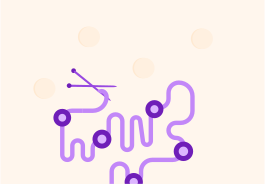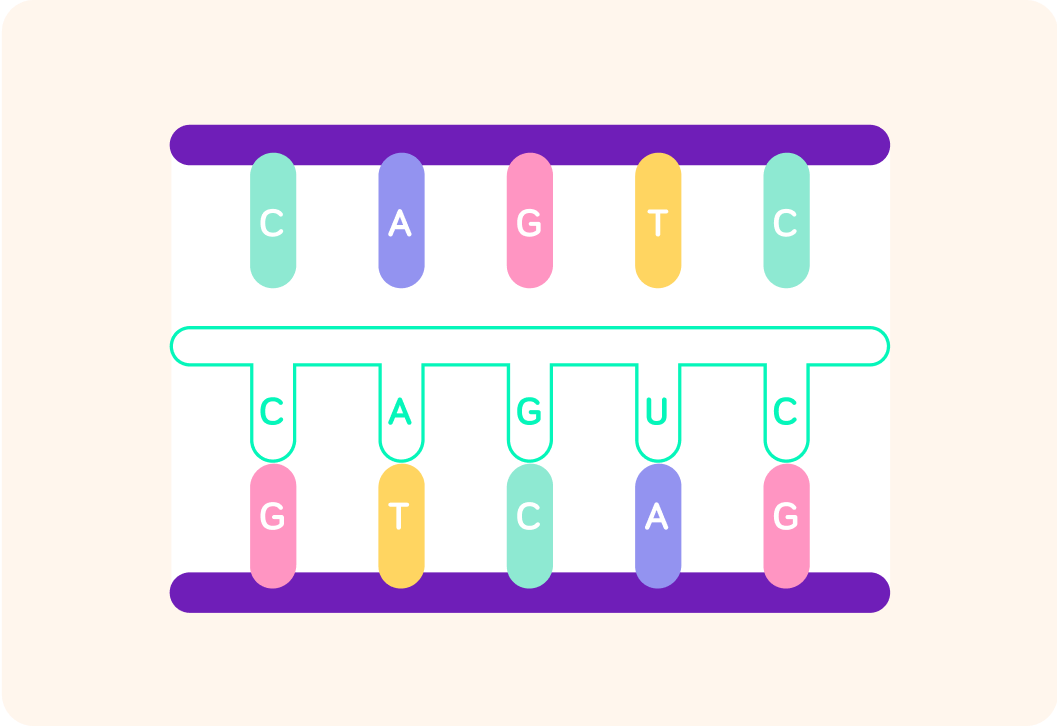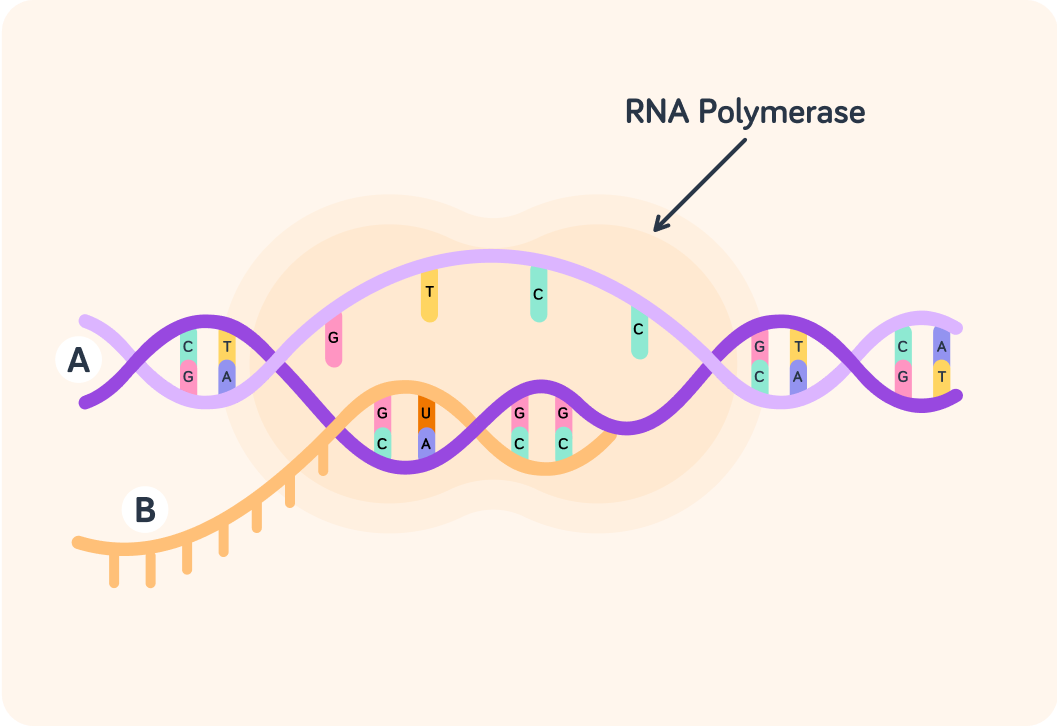YOU ARE LEARNING:
Transcription

Transcription
Transcription is the first stage in protein synthesis, a process to express the information stored in genes. The process uses enzymes such as RNA Polymerase to produce an RNA copy of DNA.
Transcription is the first stage in a process to produce proteins from DNA. What is this process called?

The word transcription is linked to the word 'transcribe', meaning a written or printed version of something. What do you think transcription does?

Transcription and mRNA
When proteins are made from DNA there are multiple steps to it. The first step is called transcription. Transcription means that a copy is made of one of the DNA strands. We call that copy mRNA, seen here in green.

Where do you think transcription occurs?

So the end goal of transcription is to make a molecule from DNA called mRNA. There are several stages to arrive at an mRNA molecule. First of all though, what do you think mRNA stands for?

The DNA strand needs to be read and copied to make an mRNA strand that can be carried out of the nucleus. Why do you think the DNA strand itself isn't carried out of the nucleus? Pick all the options you think are correct.

You can select multiple answers
During the first stage in transcription, an enzyme called helicase ‘unzips’ the two complementary DNA strands in the double helix DNA. What are the bonds that helicase breaks?

An enzyme called RNA polymerase joins to the DNA strand before the gene it wants to copy. It is attracted to and joins at a non-coding region - a section of DNA that doesn't code for a gene, but has other functions such as controlling gene expression.
RNA polymerase then moves into the coding region, or gene, and starts to make a copy of the DNA.
This copy of DNA, which moves out of the nucleus, is called mRNA.

Which strand is the mRNA? Answer A or B.


The mRNA nucleotides form bonds with the nucleotides on the newly exposed DNA strand. What bond do you think this is?
A) RNA Phosphate bonds B) Hydrogen bonds. C) HydrogenRNAse bonds.
Answer A, B or C.


What do you think the new mRNA strand is called in relation to the DNA strand?
A) A complementary copy. B) A semi-complementary copy. C) A non-complementary copy.
Answer A, B or C.


What difference did you spot between the mRNA and DNA strands?

RNA has the bases A, U, C and G while DNA has A, T, C and G.
We have seen the function of RNA polymerase in transcription. Why do you think the enzyme RNA polymerase has that name?

After a strand of mRNA has been formed, it is then spliced and transported out of the nucleus via the nuclear pores. It travels to the ribosome.
What do you think happens in the ribosome?

To sum up: Helicase unzips the double helix DNA, breaking hydrogen bonds. RNA polymerase joins to the DNA strand in a non-coding region before the gene. It reads DNA to make a complementary copy, called mRNA. The mRNA copy travels to the ribosome, where translation begins.
